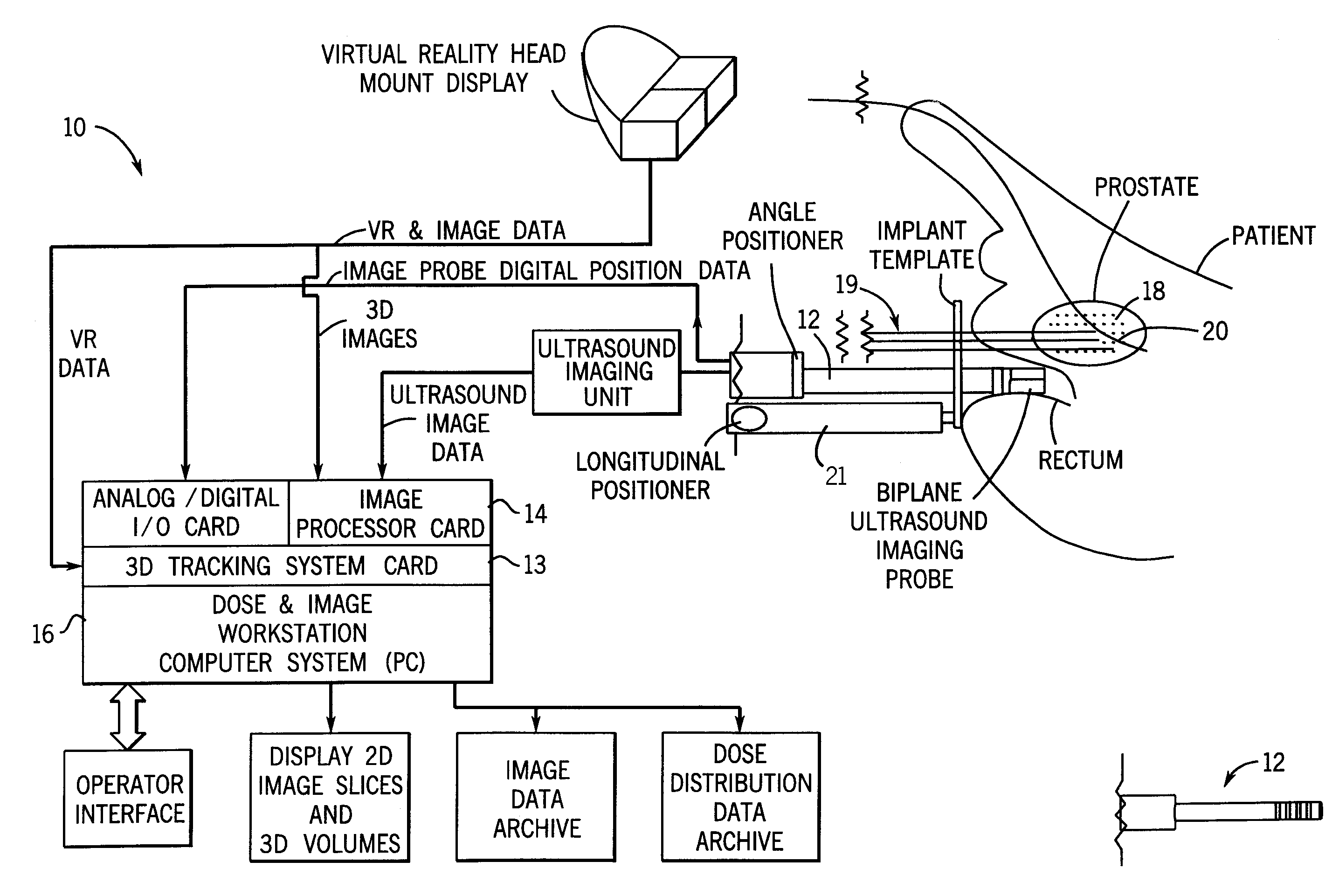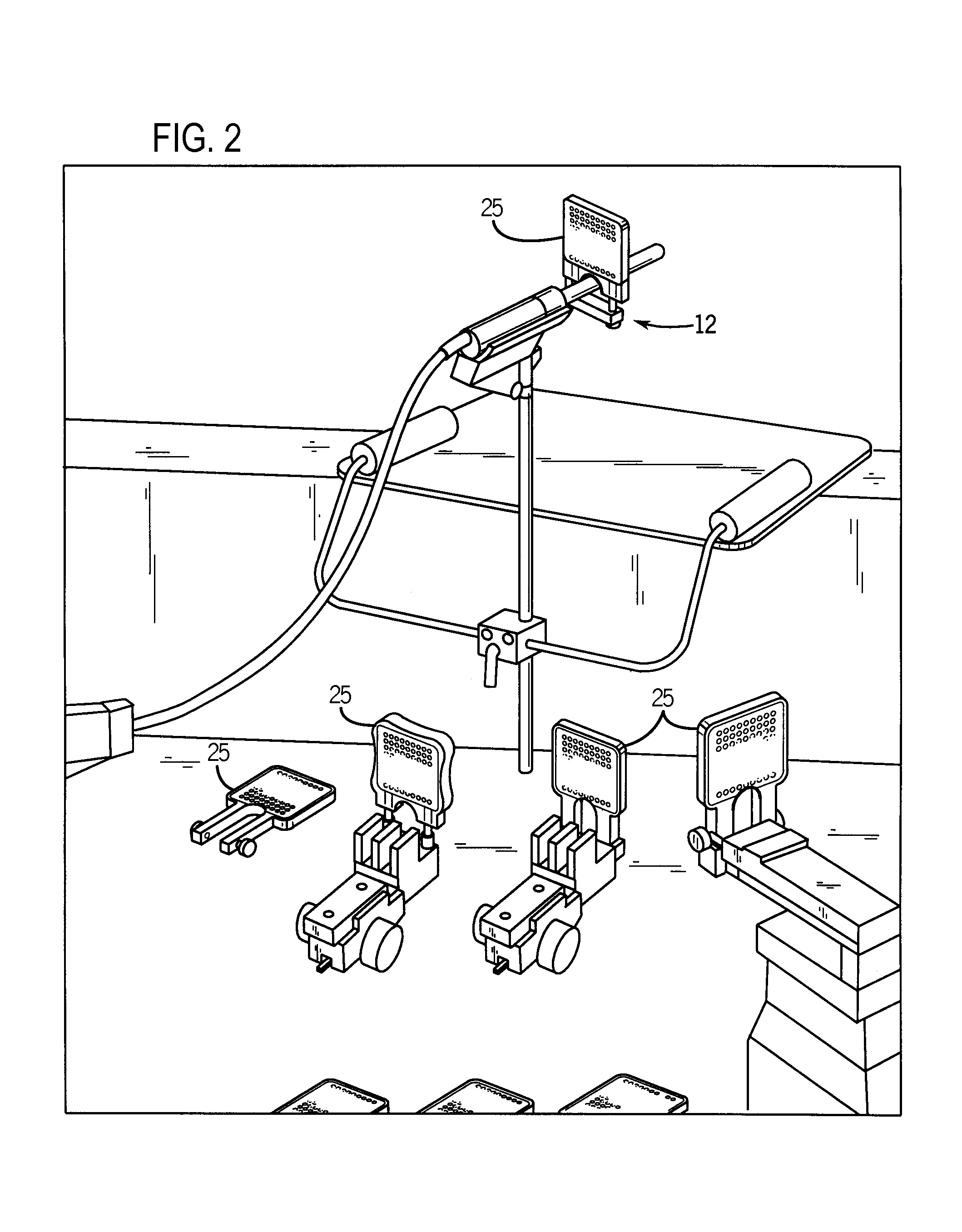Real time brachytherapy spatial registration and visualization system
- Summary
- Abstract
- Description
- Claims
- Application Information
AI Technical Summary
Benefits of technology
Problems solved by technology
Method used
Image
Examples
Embodiment Construction
[0034]A system 10 constructed in accordance with an example of the invention is illustrated generally in FIG. 1A. A three-dimensional probe 12 accumulates image data from a treatment region or organ of a patient, image data is processed using a three-dimensional imaging card 14. The probe 12 preferably is an ultrasound device but can be any other rapid imaging technology, such as rapid CT or MR. A conventional personal computer 16 having a monitor can be used to operate on the image data from the imaging card 14 using conventional software and hardware tools to be described in more detail hereinafter. Radioactive seeds 18 are provided for insertion using any one of a variety of conventional means for inserting devices or articles into the human body, such as insertion devices 19, which may be either needles or stiff catheters. The three-dimensional ultrasound probe 12, therefore, provides an image signal to the computer 16 and a virtual reality interface card 13 coupled to the imagi...
PUM
 Login to View More
Login to View More Abstract
Description
Claims
Application Information
 Login to View More
Login to View More - R&D
- Intellectual Property
- Life Sciences
- Materials
- Tech Scout
- Unparalleled Data Quality
- Higher Quality Content
- 60% Fewer Hallucinations
Browse by: Latest US Patents, China's latest patents, Technical Efficacy Thesaurus, Application Domain, Technology Topic, Popular Technical Reports.
© 2025 PatSnap. All rights reserved.Legal|Privacy policy|Modern Slavery Act Transparency Statement|Sitemap|About US| Contact US: help@patsnap.com



